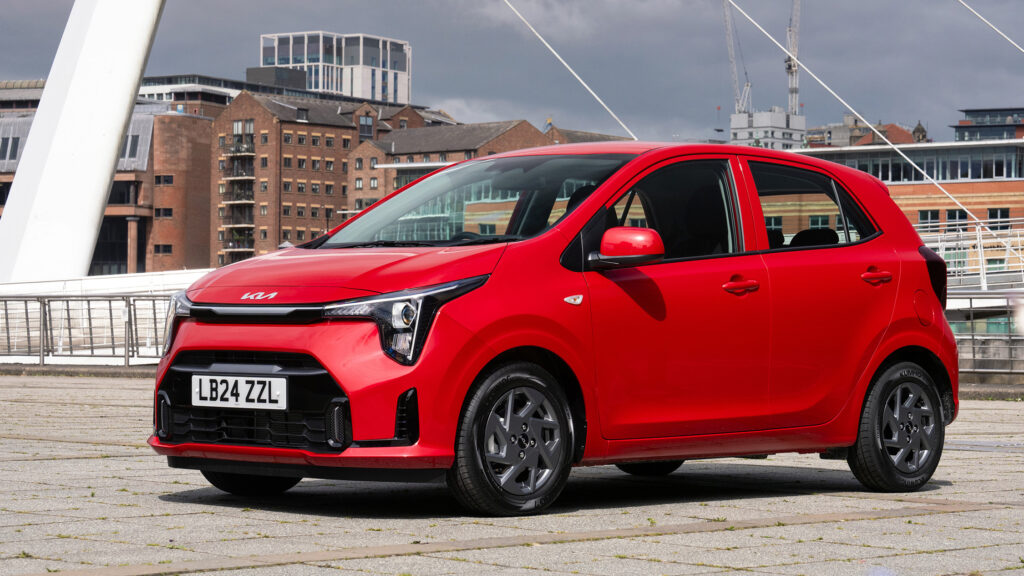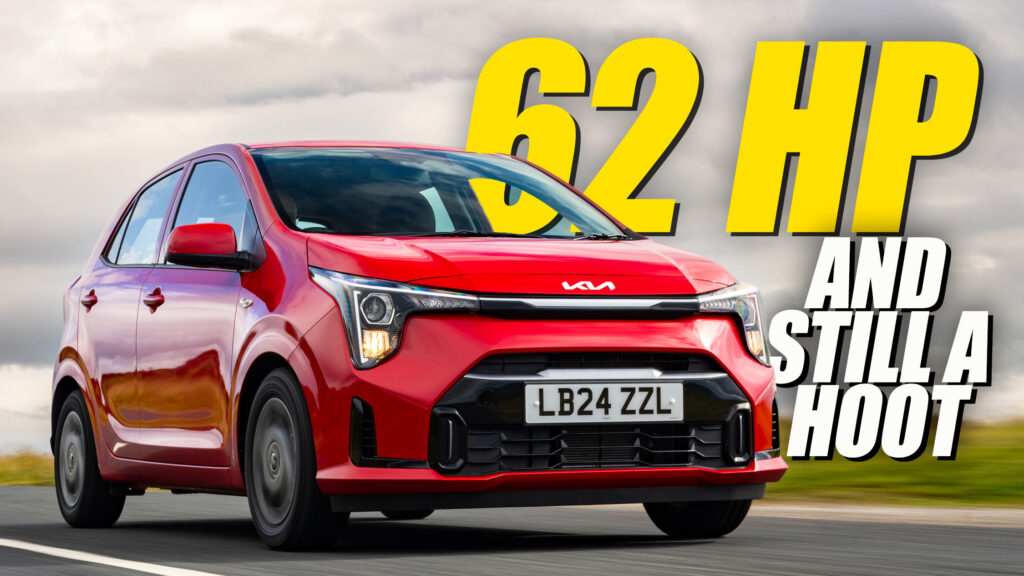When did you last drive a slow car? I mean, really slow. The facelifted Kia Picanto isn’t the slowest car on sale in the UK, but it’s not far off. It’s got the kind of accelerative energy that hasn’t been described as peppy since people were fighting in Korea, not buying its cars.
How slow? Try 15.4 seconds to 62 mph (100 km/h), or 18.2 seconds for the automatic version. And you really do have to try hard to get there with only 62 hp (63 PS) and 69 lb-ft (93 Nm) on hand from a 1.0-liter, turbo-free engine. The top whack is allegedly 90 mph (145 km/h), though you’re going to need a ton of space to prove it.
Related: Kia Picanto Gets Bolder Looks But Loses The Turbo Engine
Quick facts
But the Picanto will make you smile far more than you’d think possible looking at the bald data. And if you haven’t driven something like it for a while, or maybe ever, it’ll make you reevaluate what you thought you needed from a car in terms of speed and complexity.
I’ll tell you why in a minute, but first I ought to tell you about the Kia’s assertive visual makeover, because that’s where all the new content is. At its core, this is the same third-gen Picanto that was launched in 2020, but with a meaner stare courtesy of some inverted Y-shaped DRLs that create a clearer link to bigger, faster Kias like the Sportage and EV9.
It ought to look stupid, but it somehow works well, and let’s face it, when you’re in a car this size surrounded by big SUVs intent on cutting you up if they even notice you at all, it probably pays to look like you bite.
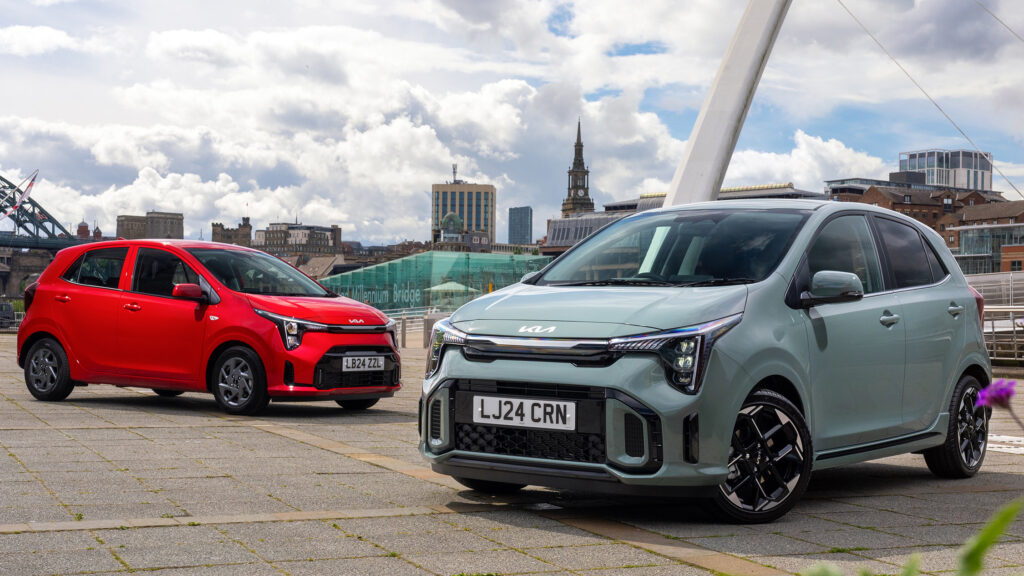
There’s a new full-width light bar at the back, and inside, every car now comes with an 8.0-inch touchscreen with (wired) Apple CarPlay and Android Auto and Bluetooth smartphone connectivity. Trim levels start at 2, step up to 3 and then switch to GT Line, which looks like a micro hatch hatch, but definitely doesn’t walk the walk because it’s packing the exact same underhood muscle as the 2.
Turbo no more
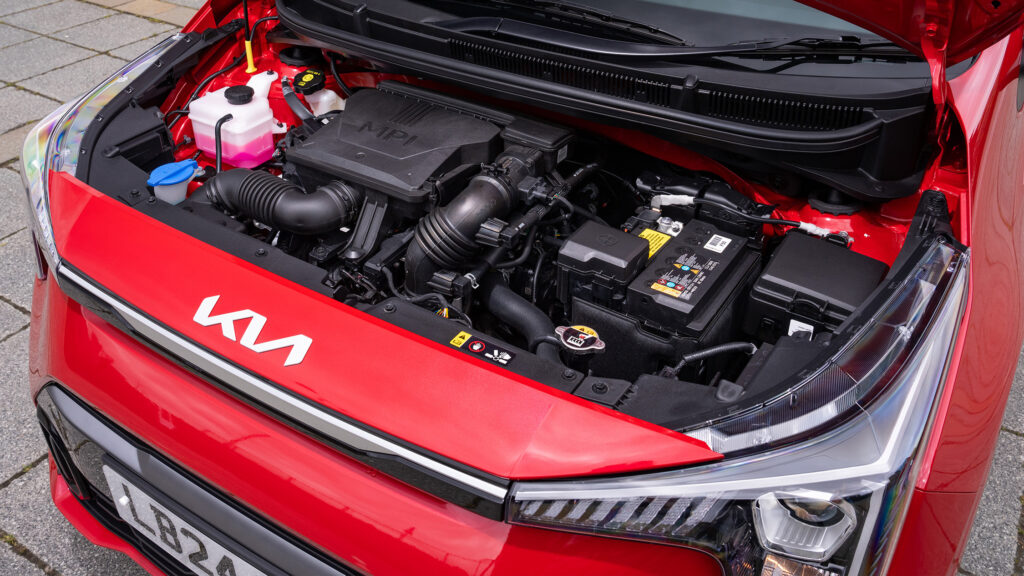
Top of the Picanto range is the GT-Line S, the only model available with a 1.2-liter engine, the punchiest motor in the lineup since Kia has killed off the 99 hp (100 PS) turbo’d 1.0-liter. The 1.2 makes 77 hp (78 PS) and 83 lb-ft (113 Nm), and cuts the zero to 62 mph time to 13.1 seconds. Unless you go for the automatic, which takes 3.4 seconds longer. No, we’re not kidding.
Kia didn’t make the ‘hot’ Picanto available for us to drive, but I was more interested in the base engine anyway. And the base trim. Seems to me that the charm in tiny (141.9 inches / 3,605 mm), relatively cheap (starting at £15,595/ $20,200 equivalent) cars like this is when they’re in their purest, simplest and lightest spec.
And it’s not like you’re slumming it even in the lowliest 2 model. We’ve mentioned the media system, but you also get air conditioning, over-air-update capability, rear parking sensors and reversing camera, and the various safety systems like collision avoidance that are now mandatory on all new vehicles sold in Europe. Tiny car equipment levels have certainly improved in the past 25 years, even if performance hasn’t.
Retro charm
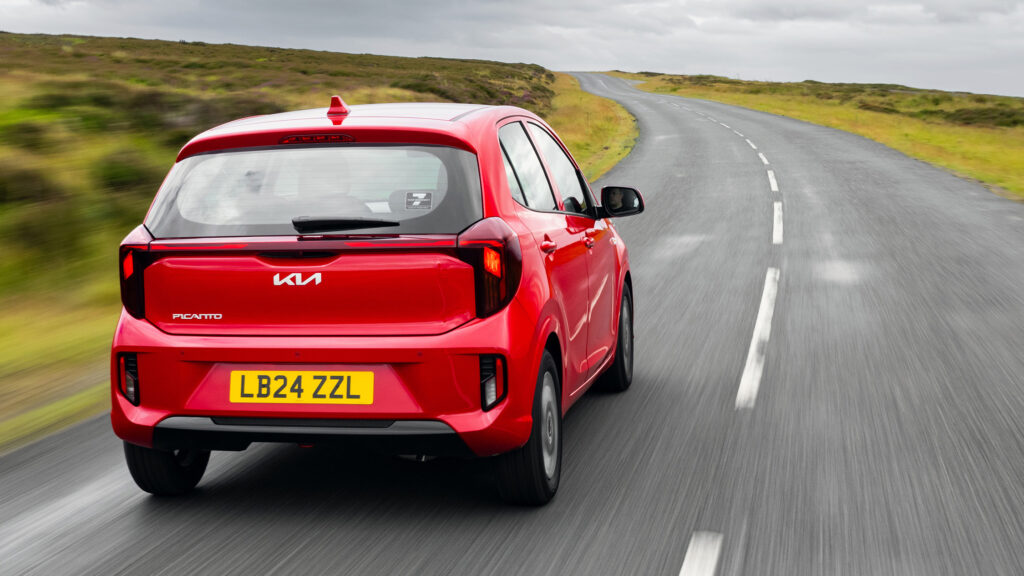
I grew up in the UK where crippling insurance rates for young drivers relegated most of us who passed our tests in the 1990s and 2000s to puny 40 hp (1.0-liter) superminis for the first year on the road. Back then I was desperate to get into something quicker, but driving this Picanto reminded me how much fun small, light, low-powered cars can be.
Instead of focusing on what the engine can do for you, you think more about the car as a whole, planning ahead, and making sure you pick the best line through every curve to conserve momentum.
At just 62.8 inches (1,595 mm) across the Picanto is comically narrow, meaning not only is it a breeze to thread through traffic and park, but it also gives you the latitude to cane the thing on almost any road. And the funniest thing is that only you’ll even know you’re doing it. Because you’ll be giving the burbly three-cylinder motor death and hurling gears at it to keep the pace up, and you’ll still be going no faster than the not-even-trying Sportage in the next lane.
More fun than it looks
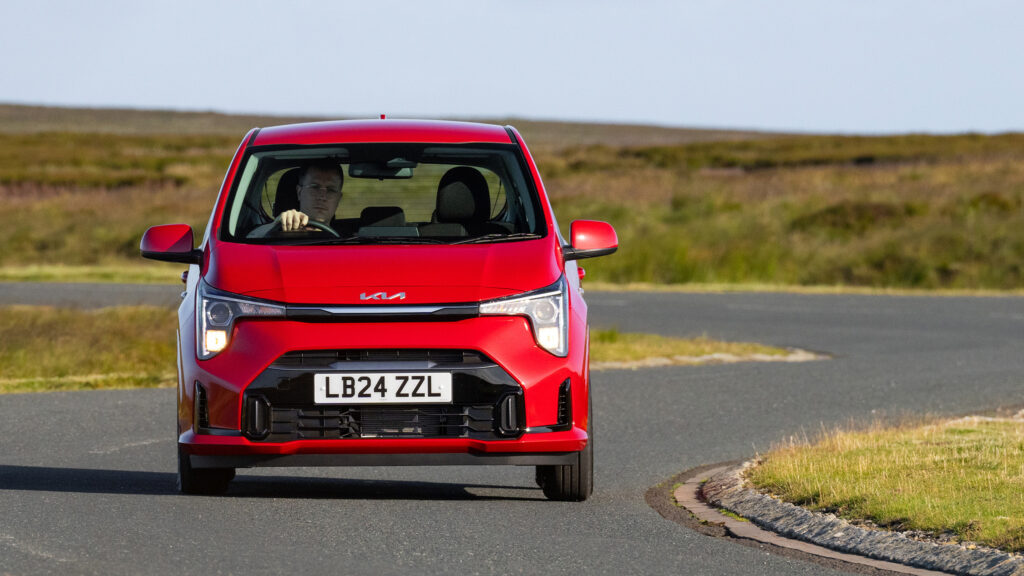
It’s no Lotus in disguise – the three pot sounds fun, but it has a soft throttle response and runs out puff long before the redline. And the steering, while quick, responsive and accurate is a little light on the move. But it handles really neatly, grips surprisingly well, even on its basic 175/65 14 tires (GTs get 195/45 16s) and still manages to ride craggy pavement without sending every jitter through the controls. Great brake feel and decent roll resistance, too (check out the lack of lean in the picture above).
The abiding impression is of an honest, simple car. There aren’t zillions of driving modes to get bogged down with, no equipment that you don’t need. Heater controls you can operate without looking first. It’s like a window into the past, when a 2,170 lbs (985 kg) curb weight was commonplace on European cars, but with just enough modern convenience features to keep you safe and comfortable.
Even Ford’s CEO Jim Farley recently said America had to learn to fall back in love with small cars, and though he wasn’t thinking about micro machines like the Picanto (which has never been offered in the US) at the time, there are definitely lessons America could learn from the Picanto and its ilk in terms of considering what we need from our cars and what we could live without.
Dacia’s Sandero poses stiff competition
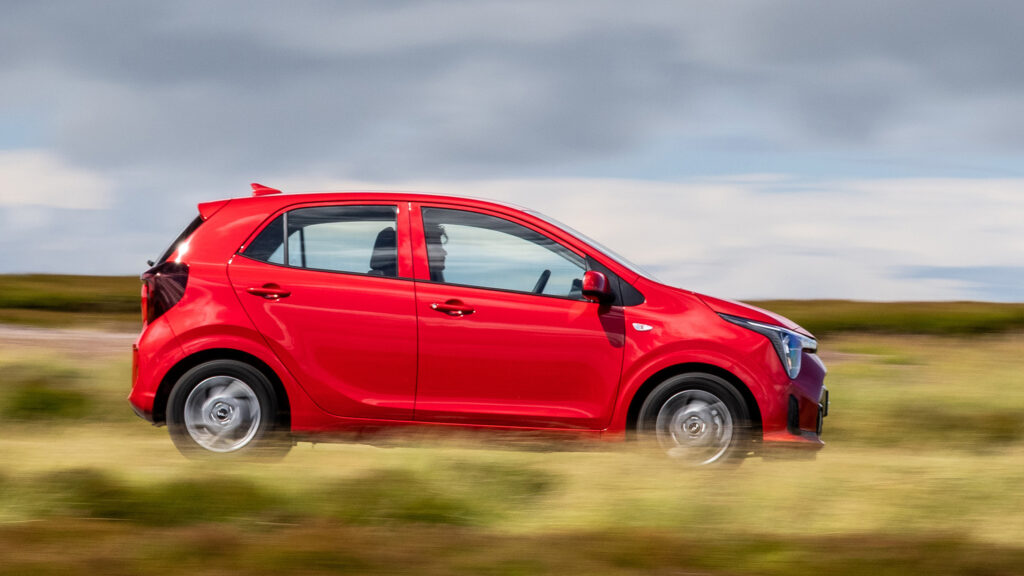
I’m not saying I’d have been keen to drive it the 4.5 motorway hours back to my house after the test drive, and push come to shove, Dacia’s similarly-priced but roomier Sandero is probably better value. And sometimes you’d long for the easy passing power of a turbocharged motor or a bigger cargo area.
But there are definitely still plenty of occasions when the Picanto would be the ideal drive, whether you live in a city or have to navigate crazy country lanes like the ones near my house where hedges scrape both sides of your car at the same time. And for all its old-school charm, a 54 mpg (UK; 45 mpg US gallon) economy figure feels very contemporary.
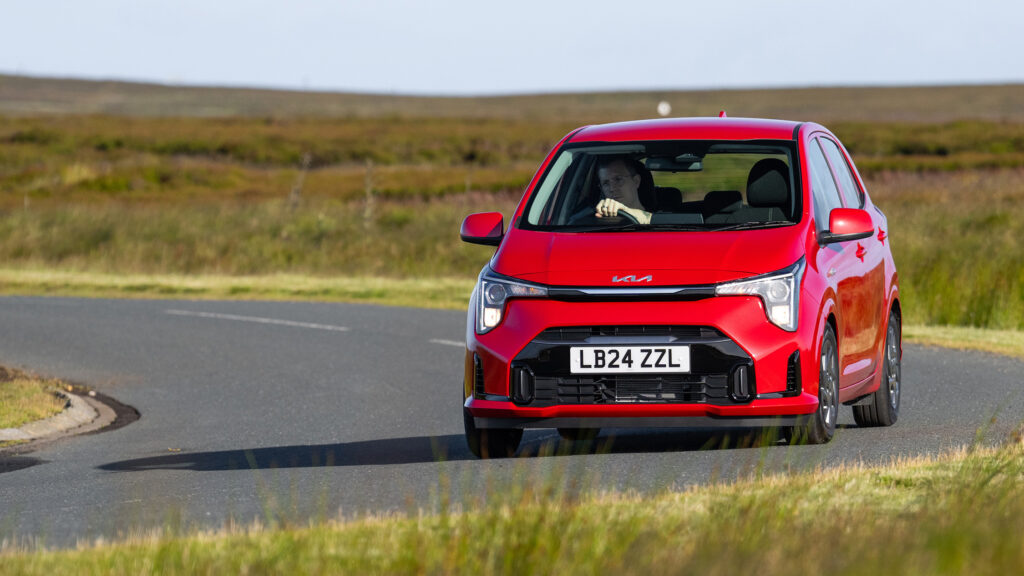
The appeal of small cars isn’t limited to Europe or Asia, either. US sales of Mitsubishi’s now 13-year-old, twice-facelifted Mirage rocketed by 86 percent in the first half of 2024 and were up 146 percent in Q2. There’s clearly a modest but viable demand for these kind of small, affordable, and inherently efficient cars, but Mitsubishi is planning to kill the Mirage off within the next couple of years, and with Chevy’s Spark two years in the ground, where will buyers turn? Maybe the Chinese will have the answer with cars like the $9,000 BYD Seagull.
Related: New Kia K4 Hatchback Teased, Will Join Sedan In North American Lineup
The increasing difficulty of turning a profit on small cars also resulted in the death of the Renault Twingo and VW Up in Europe, but it doesn’t look like the Picanto, which turns 20 this year, has any intention of throwing in the towel just yet. We’re glad to hear it, because that means it’ll still be around whenever we need a reminder that you don’t need always 600 hp to have fun. Sometimes 63 hp is plenty.
